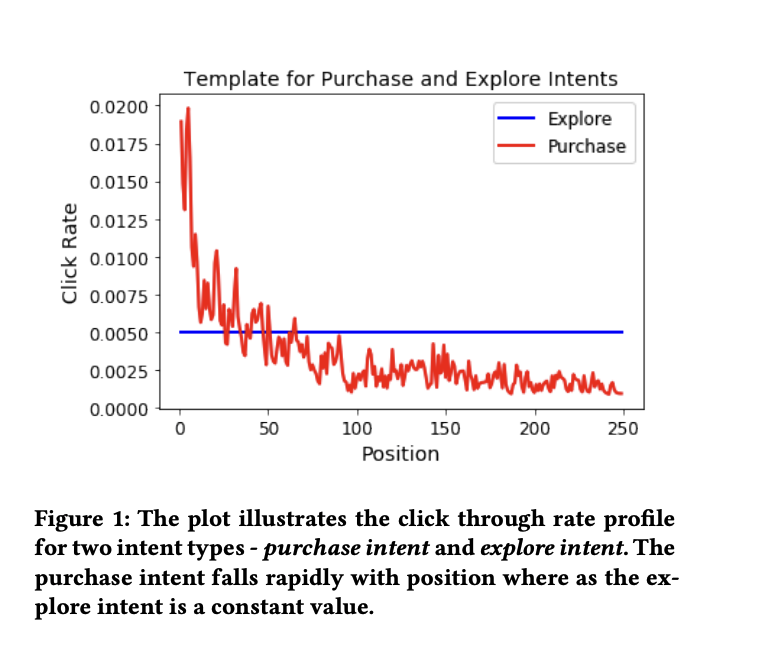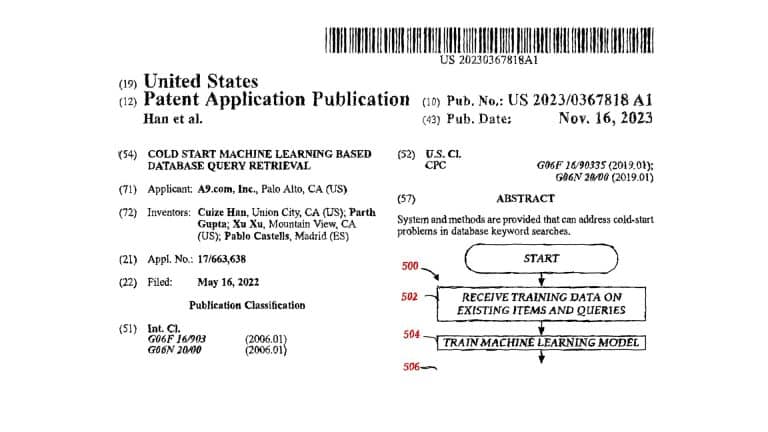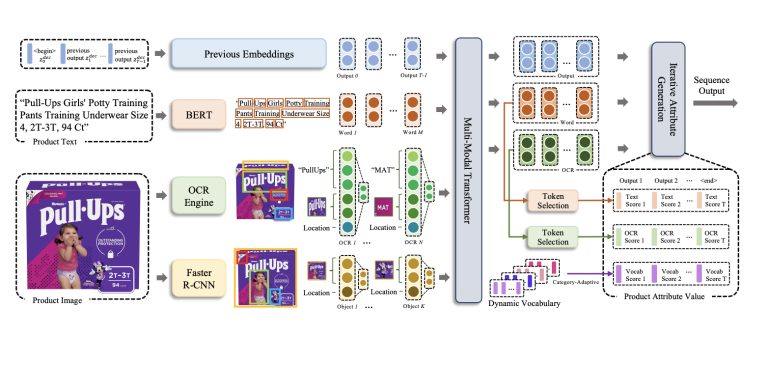
In the ever-evolving world of Amazon, the quest for the perfect search algorithm is akin to a grand odyssey. It’s a tale of sifting through oceans of data, battling the deceptive sirens of click biases, and navigating towards the treasure trove of relevant search results.
Make sure you check out the article The Evolution of Multi-Objective Ranking on Amazon: Balancing Relevance for Optimal Search.
TL;DR:
- Click Logs as Beacons: Click logs light the way, revealing user preferences, but they are not infallible. They are prone to the deceptive glare of position and appearance biases.
- Battling Click Bias: Like mythical beasts, click biases distort reality. Position bias and appearance bias skew perceptions of what users genuinely prefer.
- Beyond the Realm of CTR: Click-Through Rate (CTR) is a valuable compass, but not the only one. Amazon sails beyond, charting course with a wider array of metrics to understand the true desires of its users.
- Advanced Navigational Tools: To counter biases and unearth true relevance, Amazon deploys advanced machine learning models, as explored in papers like “Nudging Neural Click Prediction Models to Pay Attention to Position” and “Intent-Based Relevance Estimation from Click Logs.”
Click-a-de-click
In the digital world of commerce, every customer interaction offers valuable insights. Amazon’s search team systematically captures this data through click logs, analyzing user behavior to enhance the search experience. However, this process is not without its obstacles. Click bias can distort data interpretation; position bias may unfairly favor more prominently displayed items, while appearance bias can give undue advantage to products based on their visual presentation.
However, Amazon’s quest doesn’t end at CTR. This metric, while valuable, is just one star in a vast constellation. Amazon’s gaze extends to a broader horizon, seeking a more profound understanding of user satisfaction and long-term engagement.
Today, we will be delving into the insights of two science papers: “Nudging Neural Click Prediction Models to Pay Attention to Position” and “Intent-Based Relevance Estimation from Click Logs,” as we continue our qusest to get to the truth.
Click Bias in a Nut Shell

- Visibility and Attention Bias in Pos 1: Products listed in the first position on the search results page (as of the time of this post) such as “Honest Amish – Classic Beard Oil”, typically receive the highest visibility.
This increased visibility often leads to a higher Click-Through Rate (CTR), as users tend to click on the first few items they see. This phenomenon is a classic example of position bias, where the item’s placement, rather than its inherent relevance or quality, drives more clicks.

- Comparative Evaluation in Pos 3: By the time users reach the third position, their clicking behaviour can be influenced by comparative evaluation. Products in these slots, like “Striking Viking Beard Oil Conditioner” or “Wild Willies Premium Beard Oil”, are often clicked after users have skimmed through the first two options (at the time of the article). This means that clicks in the third position might reflect a more deliberate choice, as users have already compared it with the top two options and found it potentially more relevant or appealing to their needs.

- Impact on CTR and User Perception: The difference in click behaviour between the first and third positions can significantly impact CTR and how users perceive the relevance of products. Items in the first position might have inflated CTRs due to position bias, while those in the third position could have CTRs that more accurately reflect user interest and relevance.
- Challenges for Amazon’s Search Algorithm: For Amazon’s search algorithm (A9), balancing these biases is crucial. The algorithm must discern between clicks driven by position bias and those indicative of genuine user interest. This involves complex adjustments and refinements to ensure that products are ranked not just by their click popularity but also by their relevance and user satisfaction, as highlighted in papers like “Nudging Neural Click Prediction Models to Pay Attention to Position” and “Intent-Based Relevance Estimation from Click Logs”.
Click Logs in under 60 seconds
- Collecting Click Data: Click logs are records of user interactions with search results. For a term like “beard oil,” Amazon’s click logs would capture data such as which products users click on, the order of their clicks, the time spent on each product page, and whether or not the interaction leads to a purchase.
- Analysing User Preferences and Behavior: Click logs help Amazon understand user preferences and behaviour. For instance, if “Honest Amish – Classic Beard Oil” frequently appears in click logs, it might indicate a high level of interest or satisfaction with this product. Alternatively, if a product appears often in search results but seldom in click logs, it could imply a lack of relevance or appeal.
- Position Bias in Click Logs: The position of a product in search results can significantly impact its likelihood of being clicked. Products appearing at the top are more likely to be clicked, not necessarily because they are the most relevant, but due to their prominent placement. This is known as position bias.
- Refining Search Algorithms: Amazon uses insights from click logs to refine its search algorithms. By analysing patterns in clicks, they can adjust their algorithms to reduce the impact of position bias and improve the relevance of search results. For example, if users consistently select a beard oil product that initially appears lower in the search results, Amazon might adjust its algorithm to rank this product higher for similar searches in the future.
As Amazon continues to refine its algorithms and strategies, one wonders: What new innovations and methods will emerge in this ongoing quest to balance user satisfaction with business goals?
In Closing.
In the competitive landscape of Amazon’s marketplace, sellers often regard Click-Through Rate (CTR) as a key performance indicator. It signals that their product listings are attracting attention. However, a high CTR doesn’t always translate to successful conversions or customer satisfaction. When the journey from click to purchase is less than ideal, it’s crucial for sellers to look beyond surface-level metrics like CTR and delve into the broader concept of relevance and user behavior.
- Relevance Over Clicks: High CTR is encouraging, but what truly matters is relevance. If a product isn’t closely aligned with the user’s intent, even the best copywriting might not lead to a purchase. Sellers should ensure their products genuinely match the needs and preferences of their target audience. This involves understanding the specific features, benefits, and use-cases their potential customers are looking for and tailoring their product listings accordingly.
- Understanding User Behavior Without Click Logs: While Amazon sellers don’t have access to click logs, they can infer user behavior. Reviewing customer reviews and ratings can provide insights into what consumers appreciate or dislike about similar products. Monitoring questions asked by customers about their own or similar products can also reveal what information might be missing or what aspects are most important to buyers.
- Optimizing Product Listings: Improving product titles, descriptions, and images is essential. A well-written, informative, and engaging product listing can make a significant difference. It’s not just about using persuasive language; it’s about providing clear, concise, and relevant information that resonates with the target audience’s needs and queries.
- Leveraging Customer Feedback: Customer reviews are goldmines of information. They can reveal unmet needs, misunderstood features, or issues with the product that might be influencing purchasing decisions. Addressing these in the product listing or improving the product based on this feedback can increase relevance and, consequently, conversion rates.
- Analyzing Competitor Strategies: Observing how competitors position their products and what kind of user engagement they receive can offer valuable insights. This could involve observing their pricing strategies and promotional tactics.
In conclusion, while CTR is an important metric for Amazon sellers, it’s just the beginning of the journey. The road to successful conversions requires a deeper understanding of relevance and user behavior. By focusing on creating listings that are not just eye-catching but also genuinely relevant and valuable to their target audience, sellers can enhance their chances of not just attracting clicks, but also converting them into meaningful sales.













